If you’re like most people, you’ve probably wondered at one time or another if leather boots stretch. And if they do, how much? The answer to this question is a little bit complicated. Different types of leather and different methods of stretching will produce different results. This article will take a look at the various ways that leather boots can be stretched, and what you can expect from each one. It will also provide some tips on how to care for your leather boots so that they don’t stretch as much over time!
Why Do Leather Boots Stretch?
A lot of people prefer to wear leather boots because they look great in different outfits. They also last longer and are made of high-quality materials. But even the best quality leather boots can give you a tough time if they don’t fit well.
The good news is that you can easily avoid this problem by breaking in your new leather boots before wearing them out. Just like any other new shoes, it will take some time for your feet to get used to the new shoes. But once you break them in, they will be much more comfortable to wear.
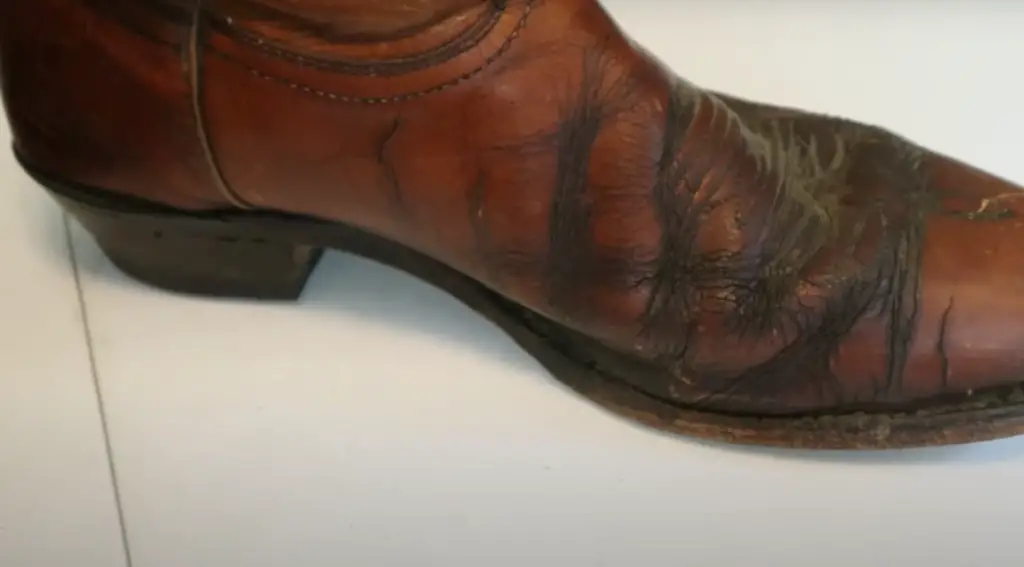
Leather is a natural material that will soften and conform to your feet over time. This process is accelerated by the heat and moisture produced when you wear the boots, which causes the leather to expand. Eventually, this stretching will result in a comfortable, custom fit. However, you shouldn’t allow the leather boot to stretch too much, or else it will become too loose and difficult to keep on your feet [1].
How Much Will Leather Boots Stretch?
It really depends on the quality of the leather, how it was tanned, and what kind of boot you’re talking about. A lower quality leather is going to have less stretch to it, while a higher quality leather will have more. The same goes for how the leather was tanned – chrome-tanned leather is going to be stiffer and has less give than vegetable-tanned leather.
So, if you’re looking for a pair of leather boots that will stretch, your best bet is to go for high-quality, vegetable-tanned leather boots in a simple style.
How to Stretch Leather Boots by Yourself?
Using Leather Stretching Spray
The stretching spray is the easiest and quickest way to stretch your leather boots. All you need to do is spray the product on the areas that are tight and then wear the boots as usual. The stretching spray will soften the leather and allow it to mold to your feet more easily. It contains a special blend of agents such as lanolin, neoprene, and alcohol which work together to safely stretch your boots. This spray won’t damage the leather or change its color.
Using a Boot Stretcher
If you don’t want to use a stretching spray, you can try using a boot stretcher. This is a tool that you insert into the boot and then turn to stretch out the leather. This tool is constructed of two handles and a bar in the middle. The bar is what does the actual stretching. There are different types of boot stretchers, so make sure you get one that’s meant for leather boots. It’s best to use this method when the boots are already wet, as it will help the leather to stretch more easily.
Wearing Thick Socks
To stretch your boots you can also try wearing them with thick socks. This will help to stretch out the leather and make the boots more comfortable to wear. The best way to do this is to first wet the boots, then put on a pair of thick socks. Wear the boots until they’re dry, then remove the socks and see how much they’ve stretched. This method is best used in combination with one of the other methods, as it can take a while for the boots to dry completely.
Freezing Your Boots
This method is a bit more extreme, but it can work if you’re desperate to stretch your boots. First, fill two ziplock bags with water and seal them shut. Then put them inside your boots so that they fit snugly against your feet. Put the boots in the freezer overnight and let the ice expand inside them. In the morning, take out the bags of water and let the boots thaw completely. This should help to stretch out the leather. This method is not recommended for suede boots, as the water can damage them [2].
Using Heat to Stretch Your Boots
You can also use heat to help stretch your boots. This can be done with a hair dryer, by holding it close to the areas that are tight and moving it around until the leather has softened. You can also use a boot stretcher that has been heated in an oven. Be careful not to overheat the leather, as this can damage it. This method of boot stretching should only be used as a last resort, as it can be dangerous. your feet more easily.
Using Weight/Pressure
You can also use a pressure technique to help stretch your boots. This can be done by putting a heavy and solid object inside the boot and letting it sit overnight. The weight of the object will help to stretch out the leather. You can also try using a boot stretcher to apply pressure to the tight areas. As heavy objects, you can use a stone, boot shapers, or even a can of water.
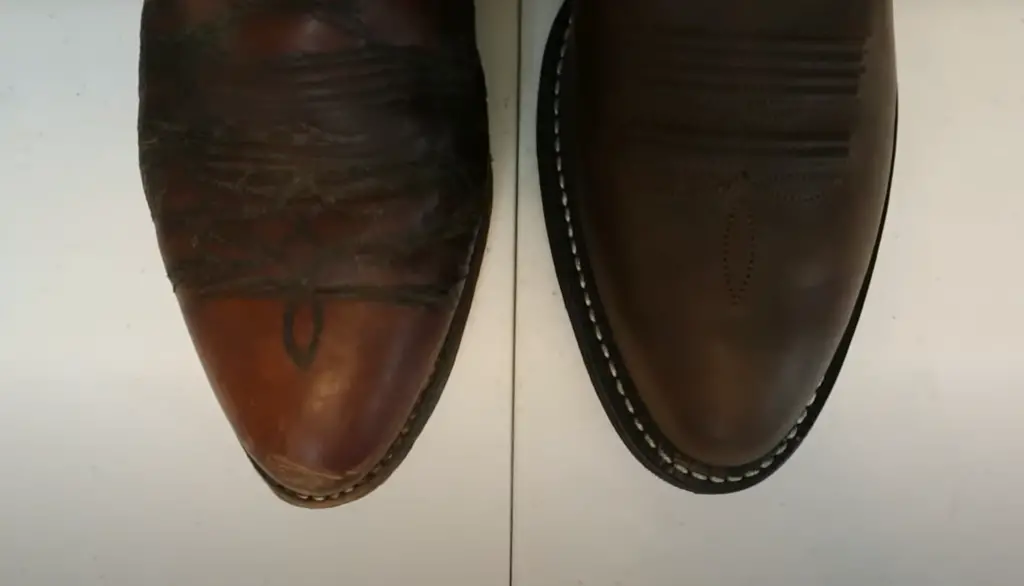
Professional Boot Stretching
The professionals will be able to stretch your boots in a way that won’t damage the leather or change the shape of the boot. They use special machines and techniques to stretch the boots, so you can be sure that they won’t be damaged.
How to Avoid the Need to Stretch Leather Boots?
Buying the right size is the best way to avoid having to stretch your leather boots. To choose the right size follow these tips:
- Know your foot measurements and try the boots on in-store before you buy;
- When buying online, check the size chart of the specific brand or retailer to ensure you’re choosing the right size;
- If you’re unsure or between sizes, always err on the side of buying a larger size rather than a smaller one;
To measure your foot use a tape measure to find the following dimensions:
- Foot length: trace your foot on a piece of paper and measure from the heel to the longest toe;
- Foot width: measure the widest part of your foot;
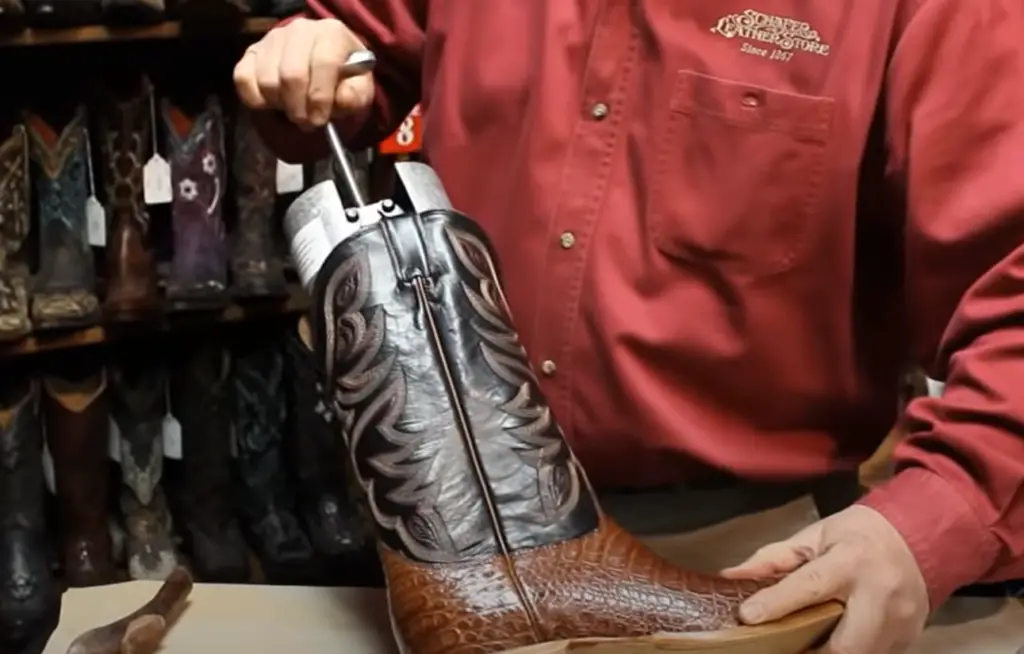
The Health Consequences of the Wrong Boot Size
The Flex Point
The flex point is the area on the boot where it bends as you walk. For most people, this is at the ball of the foot. If your boots are too small, they will pinch and rub at the flex point, causing pain and eventually blisters. Boots that are too big will cause your feet to slide around inside, which can lead to heel blisters and black toenails.
The Achilles Tendon
The Achilles tendon is the large tendon at the back of your ankle. It helps you raise your heel off the ground as you walk. If your boots are too small, they can put pressure on the Achilles tendon and cause pain. Boots that are too big can cause your feet to slip around inside, which can lead to heel blisters and black toenails.
The Toes
Your toes are the most important part of your feet when it comes to fitting in your boots. If your boots are too small, they will pinch and rub your toes, causing pain and eventually blisters. Boots that are too big will cause your toes to slam into the front of the boot with every step, which can also cause pain and blisters.
The Heel
Your heel should fit snugly in your boot with no gaps. If your boots are too small, they will pinch and rub your heel, causing pain and eventually blisters. Boots that are too big can cause your feet to slip around inside, which can lead to heel blisters and black toenails.
The Arch
The arch of your foot is the part that doesn’t touch the ground when you’re standing. If your boots are too small, they will put pressure on the arch of your foot and cause pain. Boots that are too big can cause your feet to slip around inside, which can also lead to pain.
The Width
The width of your foot is the distance from the outside of your foot to the inside. If your boots are too narrow, they will pinch and rub your feet, causing pain and eventually blisters. Boots that are too wide will cause your feet to slip around inside, which can also lead to pain.
The Insole
The insole is the part of the boot that you actually step on. It must be cushioned and supportive. If your boots are too small, they will not provide enough support for the arch of your foot and can cause pain. Boots that are too big can cause the insole to bunch up and rub against your feet, which can also cause pain [3].
The best leather types for producing boots
Leather boots are made of many different materials. Depending on the climate, intended use, and user preference, several types of leather could be used to make a boot. The most common types of leather used in bootmaking are cowhide, deerskin, elk skin, buffalo hide, bull hide, and calfskin.
Cowhide is the most popular leather used in bootmaking. It is thick, durable, and relatively inexpensive. You can stretch cowhide boots, but it is not as easy as with other materials. Deerskin is another common type of leather used in bootmaking. It is softer and more flexible than cowhide, making it easier to stretch.
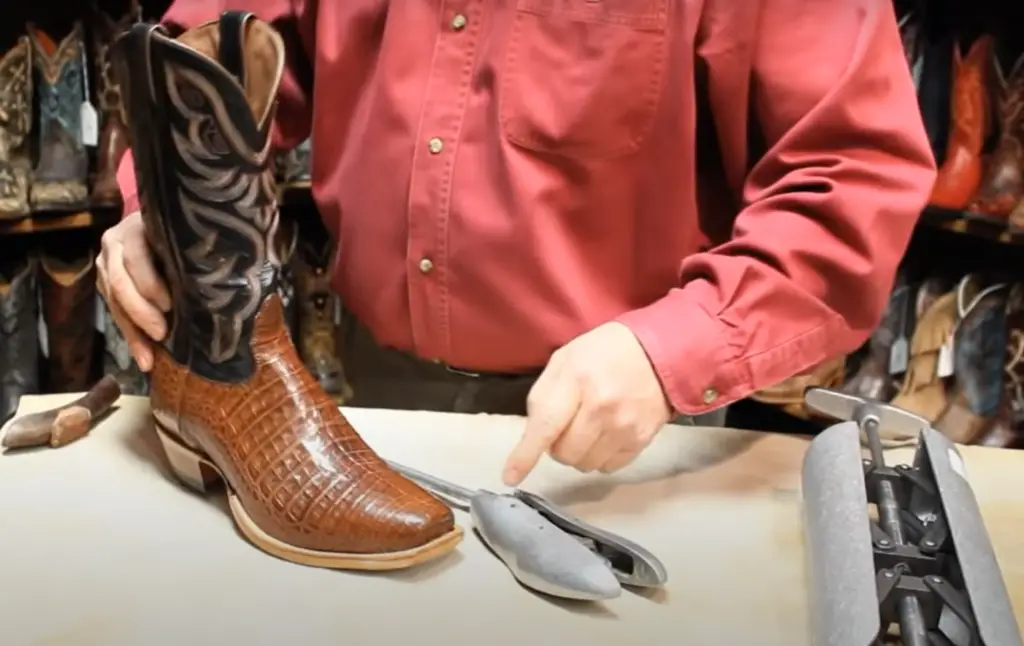
Elk skin is another type of leather used in bootmaking. It is similar to deerskin in that it is soft and flexible, making it easy to stretch. Buffalo hide is a thick, durable type of leather. It is more difficult to stretch than cowhide or deerskin because of its thickness. For stretching this leather, you will need to use a boot stretcher.
The bull hide is another type of leather used in bootmaking. It is thick and strong, making it difficult to stretch. However, it is possible to stretch bull hide boots with a boot stretcher. Calfskin is the softest and most flexible type of leather used in bootmaking. It is easy to stretch, making it a good choice for those who want their boots to have a little more give.
So, which leather is best for you? It really depends on your needs. If you need a boot that is durable and can withstand a lot of wear, then cowhide or buffalo hide is a good choice. If you need a boot that is easy to stretch, then deerskin, elk skin, or calfskin is a better choice. Whichever leather you choose, make sure to break them in slowly so that they have time to mold to your feet [4].
FAQ
How do I know if my boots fit properly?
The best way to tell if a boot fits properly is to put it on and walk around in it for a bit. You should feel comfortable and supported, without your feet slipping or your toes feeling cramped. If you’re not sure, ask a salesperson for help finding the right size.
How can I make my boots more comfortable?
If your boots are a little too tight, there are a few tricks you can try to stretch them out. First, soak them in warm water for about 20 minutes. Then, put on some thick socks and wear the boots around the house for an hour or two. This will help loosen up the leather and make them more comfortable.
Can I prevent my boots from getting too stretched out?
Yes! To help keep your boots in good shape, avoid wearing them for more than a few hours at a time. If you’re going to be on your feet all day, consider bringing a second pair of shoes to change into later. You can also stuff your boots with newspaper when you’re not wearing them to help hold their shape.
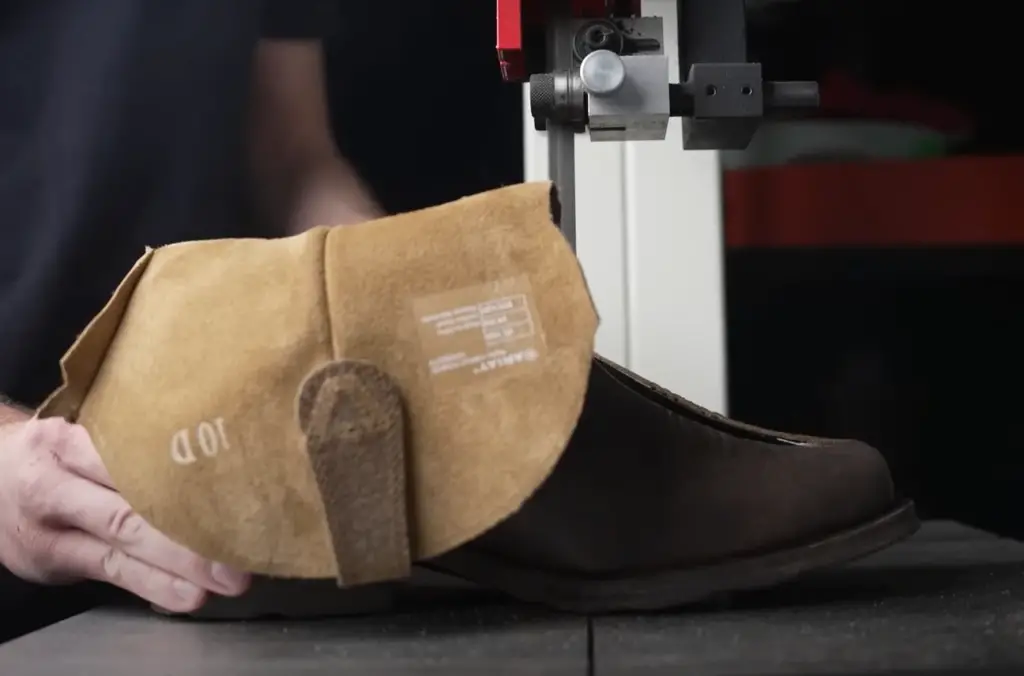
How much room should be in a boot?
When you first try on a boot, there should be about a finger’s width of space between the end of your toe and the front of the boot. If you’re planning to wear thick socks or tights, you may want to size up to leave a little extra room.
My boots feel loose, what can I do?
If your boots are feeling a bit too roomy, try using an insole or heel grip to fill up some of the space. This will help keep your feet from sliding around and prevent blisters. You can also try tightening the laces or buckles for a snugger fit.
Is it better for a boot to be tight or loose?
It’s important to find a boot that fits well, meaning neither too tight nor too loose. If a boot is too tight, it will be uncomfortable and may cause blisters. On the other hand, if it’s too loose, your feet will slide around inside and you’ll have a hard time keeping them on.
How do I know if my boots are too small?
If you can’t comfortably zip up or buckle your boots, they’re probably too small. You should also be able to wiggle your toes without feeling cramped. If your boots are giving you blisters or leaving marks on your skin, they’re definitely too small.
How tight should the boot fit at first?
A boot should feel snug but not tight when you first put it on. It should be comfortable to walk in, with enough room to wiggle your toes. If you’re planning to wear thick socks or tights, you may want to size up to leave a little extra room.
Do all boots stretch?
Most boots will stretch a bit as you wear them, but some are more likely to stretch than others. Leather and suede are typically more flexible than other materials, so they’re more likely to stretch out over time.
Can I stretch my boots at home?
Yes! There are a few different ways to stretch out your boots at home. First, you can try wearing them around the house with thick socks for an hour or two. This will help loosen up the leather and make them more comfortable. You can also soak your boots in warm water for about 20 – 30 minutes, then put them on with thick socks. For a more permanent fix, you can take your boots to a shoe repair shop to have them professionally stretched.
What is the best way to store my boots?
When you’re not wearing them, it’s important to store your boots in a cool, dry place. Avoid keeping them in direct sunlight or near a heat source, as this can cause the leather to dry out and crack. You can also stuff your boots with newspaper when you’re not wearing them to help hold their shape.
How long do leather boots take to stretch?
It depends! If you’re just wearing them around the house for a few hours, you may notice a difference right away. However, if you’re trying to stretch them out permanently, it may take a few days or even weeks of wearing them with thick socks to see results.
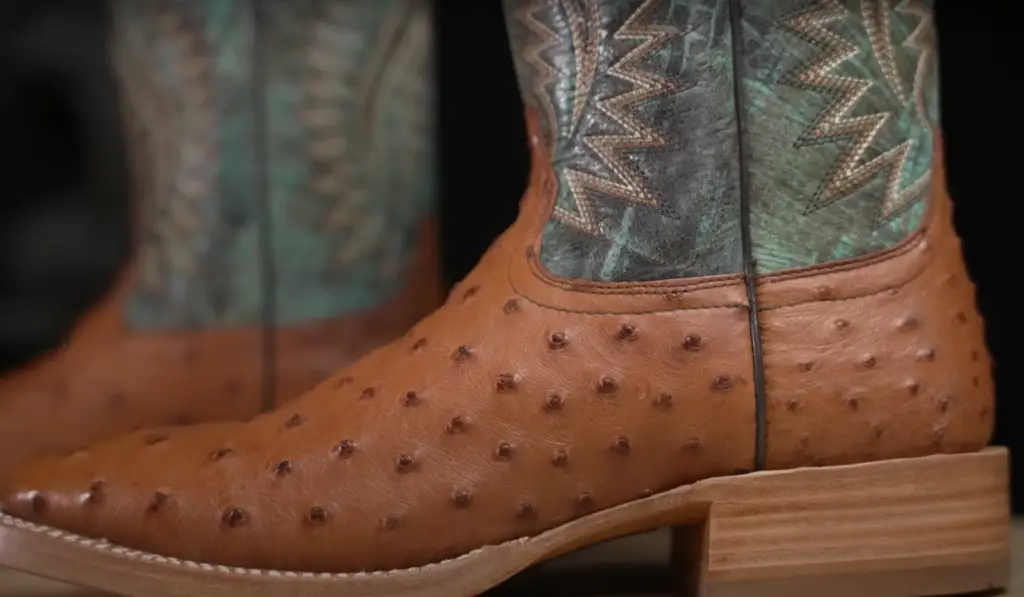
Are there any other ways to stretch my boots?
If you’re in a hurry, you can try using a hair dryer to heat up the leather, then put on some thick socks and walk around the house for a few minutes. This will help loosen up the material and make your boots more comfortable. You can also take your boots to a shoe repair shop to have them professionally stretched.
Do leather boots stretch when you wear them?
Leather boots typically stretch a bit as you wear them, but some are more likely to stretch than others. Leather and suede are typically more flexible than other materials, so they’re more likely to stretch out over time. You can also try stretching your boots at home using a hair dryer or by taking them to a shoe repair shop.
How do I stop my feet from slipping into my boots?
There are a few things you can try to prevent your feet from slipping in your boots. First, make sure you’re wearing socks that fit snugly. This will help fill up any extra space and keep your feet from sliding around. You can also try spraying your boots with an anti-slip spray or using boot inserts to help keep your feet in place.
Useful Video: How to Stretch Leather Boots : Leather Care
Conclusion
Leather boots stretch, but not all types of leather will respond the same way to being stretched. Softer, more pliable leather will give you more room in the toe box, while stiffer types of leather will take longer to break in and may not stretch as much. If you’re concerned about a tight fit, it’s always best to buy boots that are a half size larger than your usual shoe size. With proper care and regular stretching, your new leather boots should give you years of comfortable wear.
References:
- https://workwearcommand.com/do-leather-boots-stretch/
- https://www.instyle.com/how-tos/how-to-stretch-leather-boots
- https://www.footandankleassociatesofmaine.com/blogs/the-consequences-of-wearing-the-wrong-size-shoe.html
- https://www.misiuacademy.com/types-of-shoe-leather-guide/

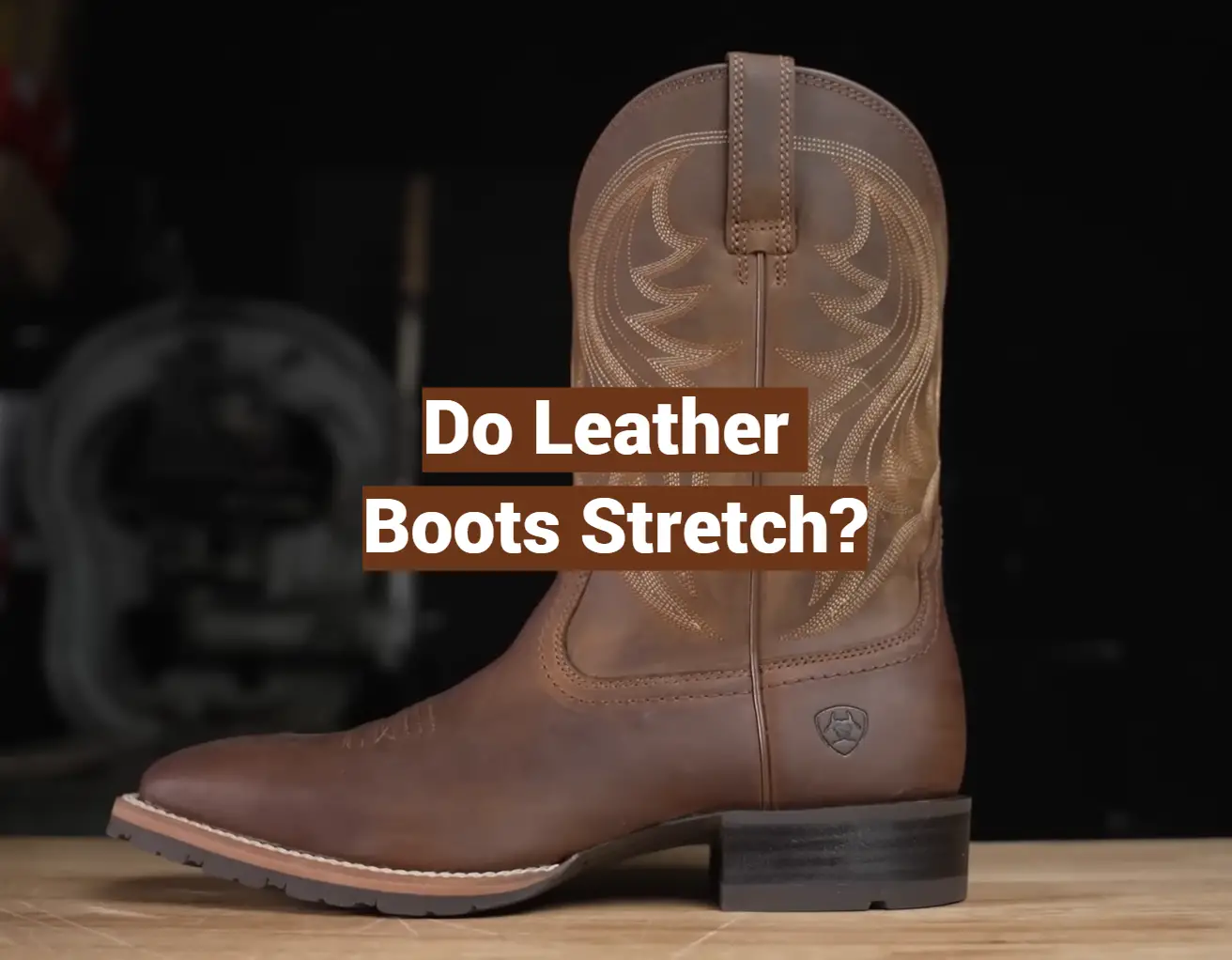
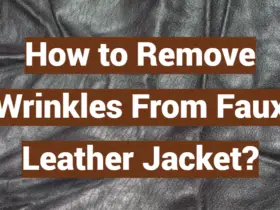




Leave a Reply